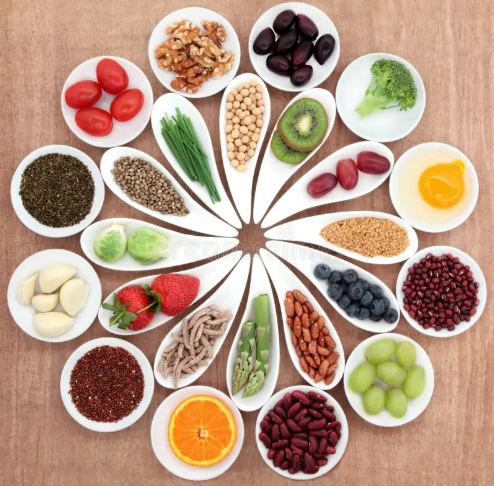
In today’s fast-paced world, grocery store shelves are lined with thousands of food products, each trying to catch your eye with appealing packaging, health claims, and buzzwords like “natural,” “low-fat,” or “sugar-free.” But when it comes to truly understanding what’s inside the package, there’s one place that tells the real story — the food label.
Learning to decode food labels is a vital step toward making healthier choices, managing dietary restrictions, and fueling your body with nutritious foods. This guide breaks down everything you need to know about food labels, helping you become a savvy shopper and a more mindful eater.
1. Why Food Labels Matter
Food labels are designed to provide consumers with the nutritional information and ingredient content of a product. Understanding these labels empowers you to:
- Compare products more effectively
- Control your calorie, fat, sugar, and sodium intake
- Identify allergens or ingredients you may want to avoid
- Select foods that align with your health goals or dietary needs
Without this information, even the most health-conscious consumers can fall for misleading marketing or hidden ingredients.
2. The Nutrition Facts Panel: A Closer Look
The Nutrition Facts panel is standardized across most packaged foods and is regulated by government bodies (like the FDA in the U.S.). Here’s a breakdown of its key components:
a. Serving Size
At the top of the label, you’ll see the serving size and the number of servings per container. This is one of the most critical elements — many people misinterpret the nutritional values because they assume they’re for the entire package, not just one serving.
Tip: Always compare the serving size to the amount you actually eat. If the serving size is one cup and you eat two, double all the values listed.
b. Calories
Calories tell you how much energy you’ll get from a single serving. This is important for weight management and energy balance.
Look for: Lower-calorie options if you’re trying to lose or maintain weight, but also consider where the calories come from — not all calories are equal in terms of nutrition.
c. Macronutrients
These include:
- Total Fat (with breakdowns into Saturated Fat and Trans Fat)
- Cholesterol
- Sodium
- Total Carbohydrate (including Dietary Fiber and Total Sugars)
- Protein
Saturated & Trans Fats
These fats can raise LDL (bad cholesterol) levels. It’s best to limit them.
Added Sugars
This line indicates how much sugar was added during processing. The American Heart Association recommends no more than 25g (6 tsp) of added sugar per day for women and 36g (9 tsp) for men.
Fiber
A higher fiber content is generally a good sign — aim for at least 25-30g of fiber per day from a variety of sources.
3. % Daily Value (%DV)
The % Daily Value shows how much a nutrient in a serving of food contributes to a daily diet. This is based on a 2,000-calorie-per-day intake (which may not match your personal needs).
How to Use %DV:
- 5% DV or less = Low
- 20% DV or more = High
Use this guide to identify high or low sources of nutrients. For example, if you’re trying to increase fiber intake, look for products with 20% DV or more for fiber. If you’re limiting sodium, look for less than 5% DV.
4. Ingredients List: Read Between the Lines
The ingredients list is often overlooked, but it’s one of the most important tools for making healthy food choices. Ingredients are listed in descending order by weight, so the first few ingredients make up most of the product.
Red Flags in Ingredients:
- Sugar in Disguise: Sugar can appear under many names like high-fructose corn syrup, cane juice, dextrose, maltose, and agave nectar.
- Refined Grains: Look for whole grains as the first ingredient. Words like “enriched” or “bleached” mean the grain has been processed and stripped of nutrients.
- Artificial Additives: Watch for artificial colors, preservatives, and flavors. While not all additives are harmful, many are linked to allergic reactions or hyperactivity in children.
Tip: A long list of unrecognizable ingredients can be a sign of a highly processed food.
5. Misleading Marketing Terms
Food packaging is designed to sell — not necessarily to inform. Many labels include marketing buzzwords that sound healthy but can be misleading.
Common Terms and What They Really Mean:
- Natural: Not a regulated term. It doesn’t guarantee the absence of chemicals, GMOs, or added sugar.
- Organic: Regulated and meaningful — indicates that the food was grown without synthetic pesticides or fertilizers and has no genetically modified ingredients.
- No Sugar Added: Doesn’t mean sugar-free. It means no additional sugar was added, but the product may still contain natural sugars.
- Light (or Lite): May refer to color, flavor, or fat content — it’s worth checking what “light” really means on the label.
- Low-Fat or Fat-Free: Often higher in sugar or salt to make up for lost flavor.
- Whole Grain vs. Multigrain: “Whole grain” means all parts of the grain are used. “Multigrain” just means more than one grain — not necessarily whole.
Bottom line: Always verify health claims by reading the Nutrition Facts and ingredient list.
6. Spotting Allergens
In many countries, food manufacturers are required to highlight the presence of major allergens. In the U.S., the top 9 allergens include:
- Milk
- Eggs
- Peanuts
- Tree nuts
- Wheat
- Soy
- Fish
- Shellfish
- Sesame
Look for allergen statements like “Contains milk, soy” or “May contain traces of nuts.”
7. Special Dietary Considerations
Depending on your dietary needs, you may need to pay extra attention to certain nutrients or ingredients.
For People With:
- Diabetes: Focus on total carbohydrates, especially added sugars. Fiber is helpful for blood sugar regulation.
- High Blood Pressure: Limit sodium intake. Aim for no more than 1,500–2,300mg per day.
- Heart Disease: Look for low saturated fat, trans fat, and cholesterol. Omega-3 fats and fiber are heart-friendly.
- Celiac Disease or Gluten Sensitivity: Avoid wheat, rye, barley, and check for certified gluten-free labels.
- Vegan/Vegetarian Diets: Check for hidden animal products (e.g., gelatin, casein, whey) and ensure plant-based protein sources are included.
8. Front-of-Package Labels: Helpful or Hype?
More and more products now have symbols, ratings, or color-coded systems on the front of the package. These are designed to help consumers quickly assess nutritional quality.
Examples include:
- Heart-Check Mark (AHA)
- Smart Choices
- Nutri-Score (in Europe)
- Traffic Light Labels
While these can be helpful at a glance, they often oversimplify or vary in standards. The back label still holds the most accurate information.
9. Tips for Smarter Shopping
Here are practical tips to keep in mind during your next grocery trip:
a. Compare Products Side by Side
Pick up two similar items (e.g., two brands of granola) and compare nutrition panels. Choose the one with less sugar, more fiber, and fewer processed ingredients.
b. Don’t Rely on Color or Design
A green or rustic-looking package doesn’t mean a product is healthy. Stick to reading labels.
c. Shop the Perimeter
The healthiest, least processed items are often around the store’s perimeter — produce, dairy, meats, and fresh bakery items.
d. Be Mindful of Serving Size Tricks
Some small packages list multiple servings to appear lower in calories or sugar. If you’re eating the whole package, multiply accordingly.
10. Practice Makes Perfect
Reading food labels may seem overwhelming at first, but the more you practice, the faster and easier it becomes. Start with a few go-to products in your pantry or fridge and see what you learn.
Over time, you’ll begin to recognize patterns, spot healthier alternatives, and even find that your taste buds adapt — craving fewer processed foods and more whole, nourishing ingredients.
11. Label Literacy in the Real World: Examples
Example 1: Flavored Yogurt
Label:
- Serving Size: 1 cup
- Calories: 220
- Sugar: 28g (18g added)
- Protein: 5g
- Ingredients: Milk, sugar, fruit puree, natural flavors, pectin
Takeaway: The added sugar is high — nearly the entire daily limit for women. Look for plain yogurt and add your own fruit instead.
Example 2: Whole Grain Bread
Label:
- Serving Size: 1 slice
- Total Carbs: 17g
- Fiber: 3g
- Sugar: 2g
- First Ingredient: Whole Wheat Flour
Takeaway: A good source of fiber with whole grain as the first ingredient — a solid choice.
Example 3: Granola Bar
Label:
- Serving Size: 1 bar
- Calories: 150
- Sugar: 12g (9g added)
- Fiber: 1g
- First Ingredient: Corn syrup
Takeaway: Not the healthiest option — high in added sugar and low in fiber. Consider a bar with nuts, seeds, and dried fruit with minimal added sugar.
Conclusion
Understanding food labels isn’t about perfection — it’s about making informed choices more often than not. When you know what to look for, you can navigate the grocery store with confidence and control, turning every meal into a step toward better health.
Whether you’re trying to cut back on sugar, eat more whole foods, or manage a health condition, food label literacy is your secret weapon. Start small, stay curious, and remember: knowledge on the label leads to power on your plate.





















